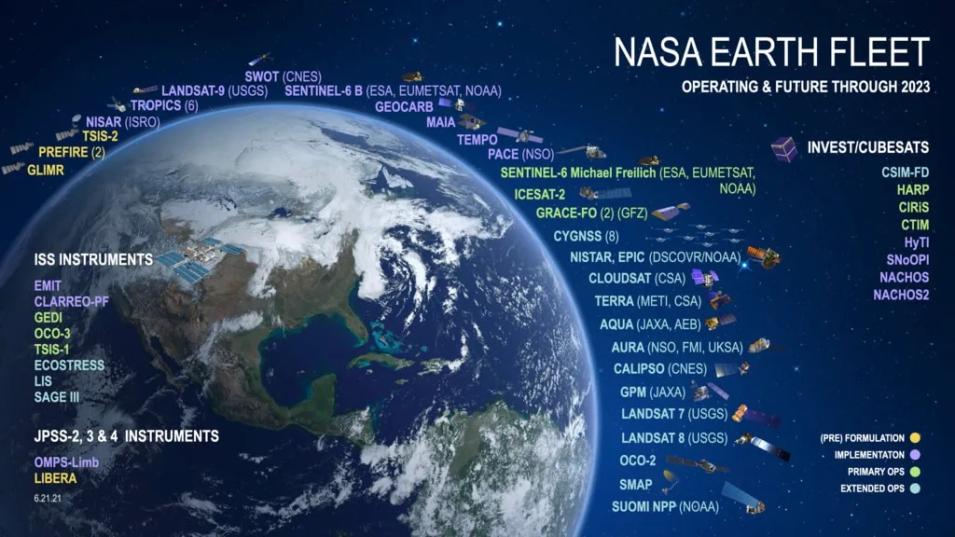The multitude of Earth observation satellites in orbit transmit back a broad range of data for a variety of environmental and meteorological phenomena. Federal agencies use Earth observation data in ways that affect and benefit our lives every day. Government agencies monitor water quality, respond to natural disasters, maintain our national parks, model and predict the weather, protect wildlife habitat, forecast air quality, and monitor our natural resources to name a few. Though you may not realize it, these services require access to satellite Earth observation data.
Connecting to the Data You Need
To better understand the data needs of federal agencies and other Earth observation data users, the interagency U.S. Group on Earth Observations created the Satellite Needs Working Group (SNWG). The SNWG helps connect federal agencies with the data they need to fulfill their missions and to provide services to the public.
The SNWG surveys federal agencies every two years to understand what Earth observation data they need to accomplish their key objectives and fulfill their responsibilities. The survey responses identify how well their Earth observation data needs are being met. Then, NASA works to help locate the needed data or to inform decision makers about unmet needs.
IMPACT team members conduct a detailed analysis of all the survey responses to identify characteristics and trends in the data the agencies need. The team also assists NASA in analyzing the survey responses for the purpose of identifying the data from current or soon-to-be-launched satellites that will help meet agency needs.
A NASA scientist directly follows up with the agency to discuss the currently available data, whether new data products are needed, and how observations from upcoming satellite missions can be utilized to meet the needs of agencies. By connecting agencies to existing data, developing new data products, and informing upcoming satellite missions, both IMPACT and NASA help agencies get the data they need to fulfill their objectives.
Katrina Virts, an Earth scientist and the lead of IMPACT’s SNWG initiative, summarizes the team’s effort this way:
"The goal of the SNWG process is to connect federal agencies with the Earth observation data they need to accomplish their objectives, to increase the use of NASA’s Earth data, and to identify gaps in NASA’s current data holdings."
One of the things the IMPACT SNWG team is currently working on is a process to identify satellite missions and NASA data collections relevant to a data need. This pipeline connects need specifications — what the agency is trying to observe (e.g., cloud properties, land surface deformation, or forest health) and what spatial resolution and data format — with specific missions and data collections that match the criteria. This pipeline can eventually be used to help other users find the data they need for their applications.
When multiple agencies have similar needs, NASA can develop efficient solutions to meet them. A good example is a project IMPACT is implementing called Harmonized Landsat Sentinel-2 (HLS). HLS harmonizes Earth surface reflectance data from the optical Landsat and Sentinel-2 missions into a single high-resolution product. This project was initiated after the 2016 SNWG survey responses revealed that many agencies needed global surface reflectance data for their land monitoring applications and research.
Another example of NASA’s response to meeting agency needs identified in the 2016 SNWG survey is the creation of the Airborne Data Management Group (ADMG) within IMPACT. Also in the survey, agencies expressed difficulty in using NASA airborne and field campaign data. The ADMG project was formed to ensure that these data are more discoverable and usable to a broader community.
These examples show how the activities of IMPACT’s SNWG team are increasing Earth scientists’ access to the data they need. The next series of survey are currently being collected. We’ll return again to present the IMPACT efforts resulting from these latest responses.

